The gardens here in Ontario are awakening from their winter slumber. Spring is a time of vigorous, active growth for both desirable and undesirable plants. Winter annual weeds are in full force and many of them have already started flowering. The perennial weeds are likewise coming into full force. Now is the most important time to get a handle on your weed populations. Putting the effort in now to lower your weed populations will greatly reduce the amount of weeding you have to do all season long. Following are 20 common spring weeds here in Ontario with photos, tips on how to identify them and how to control them. For information on common summer weeds visit 20 Common Summer Weeds in Ontario.
Pre-article definitions:
Annuals: finish their life cycle in 1 year. Typically annuals germinate from seed in the spring, flower and set seed then die in the winter.
Winter annuals: seed germinates in autumn, they live through the winter then flower, set seed and die the following season.
Biennial: finishes it’s life cycle in 2 years.
Perennial: Come back every year.
1. Ground Ivy (Glechoma hederacea)

Ground Ivy (Glechoma hederacea) is a perennial weed from the mint family. As a member of the mint family it has simple, fuzzy leaves that appear opposite each other, square stems and a strong mint‑like odor when crush. Flowers are blue/purple, trumpet shaped and appear in May-June. The plant has a creeping growth habit that has the ability to form roots at their nodes wherever they touch the ground. This feature makes it an extremely aggressive weed in the lawn. In the garden their shallow roots make them easy to weed out but they must be removed from the site otherwise they can sprout new roots. Ground ivy reproduces by seed as well as by the creeping stems (stolons). Look-a-like plants, common mallow; to help tell the difference between the two, ground ivy has fuzzy leaves where as common mallow leaves are fairly smooth (few hairs) on the upper surface and more densely hairy on the underside and stems do not root at the nodes.
Ground Ivy Control: In the gardens hand weeding is the best solution. In the lawn, regions like us with pesticide bans can use Iron based herbicides. These require multiple treatments every year as it only top kills the weed. Vinegar sprays are not advised as they also top kill the turf and affect the pH of the soil. Bagging grass clippings will help to reduce it’s spread. For regions permitted herbicides a combination of 2,4-D, dicamba and MCPP/MCPA sprayed at flowering time and in the fall has been shown to be most effective.
2. White clover (Trifolium repens)

White clover (Trifolium repens) is a creeping, cool-season perennial from the bean family (Fabaceae). It does not cause to much trouble in the garden beds where it can be easily dug out. In the lawn however it is very challenging to control or eradicate. The reason for this is three fold. The clover plant, like ground ivy, roots wherever stem nodes touch the soil, they also put on long, thick tap roots and are prolific seeders. Although the plant it’s self is short lived (2-3 years) it produces enough seed to ensure it’s presence in your lawn for many years.
Identifying white clover: The plant forms a dense low growing patch that tends to out compete other weeds. The compound leaves alternate up the stem and are composed of 3, tear shaped leaflets. The flowers have globe-shaped flower heads that are white, sometimes with a pink tinge. They bloom May – October.
White clover control: In the gardens hand weeding is the best solution. In your lawn, white clover is usually a sign of low nitrogen so increasing your nitrogen fertilizer should help to give your lawn an advantage over the clover. Hand weeding is an option but I personally have not found it to be very effective. Like ground ivy control, iron based herbicides are an option but they require multiple treatments every year as it only top kills the weed. Bagging grass clippings will help to reduce it’s spread. For regions permitted chemical herbicides 2,4-D, (which is a selective and systemic organic herbicide) is effective but will have to be done yearly to control the seeds that germinate each year. The final option is to just embrace them. They add nitrogen to the soil and stay green all season with little to no maintenance.
3. Creeping Speedwell (Veronica filiformis )

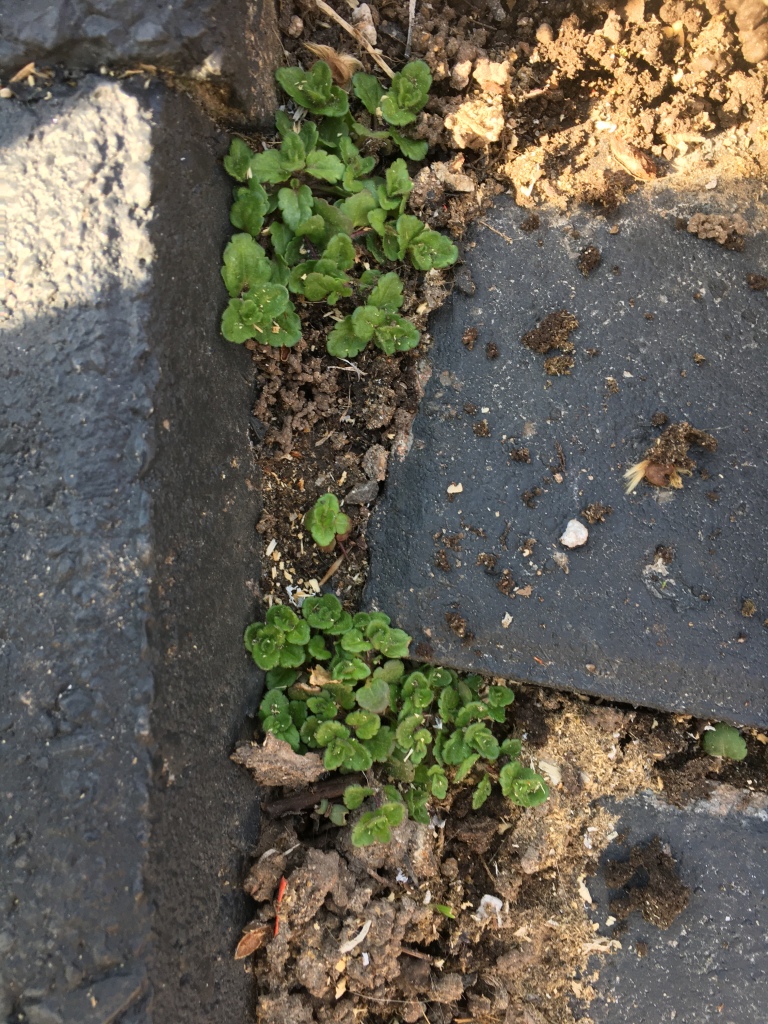
Creeping Speedwell (Veronica filiformis) is a perennial of the Scrophulariaceae (Figwort) family. It is a low growing weed or ground cover that roots down at leaf nodes much like ground ivy, making it a difficult weed to eradicate when it gets into the lawn. The leaves are small and kidney-shaped with scalloped margins. They are mostly hairless with opposite leaves that become alternate near the tips. The tiny blue flowers have 4 petals and appear in spring (April -June). They rarely produce seed pods. The root system is shallow and fibrous. They are are commonly found growing in interlock pathways, cracks in sidewalks, lawns and gardens. Hardy in Zone: 4 to 8, can tolerate zone 9 if it has partial shade. Look-a-likes include Germander Speedwell (Veronica chamaedrys) and corn speedwell (veronica arvensis).
Creeping speedwell control: In the garden, hand weeding is the best option, being sure to remove all portions of root and stem to prevent re-growth. In the lawn, maintain a healthy lawn by regular fertilizing, watering and mowing to keep the turf thick and choke out weeds. Bag your grass clippings so the creeping speedwell cannot spread by loose fragments, that are returned to the turf. Hand weeding if the numbers are low is useful. Creeping speedwell is difficult to control chemically as it is resistant to many of them. Fluroxypyr (a selective post-emergent herbicide for broadleaf weeds) has been proven to be the most effective chemical in controlling speedwell.
4. Dandelion (Taraxacum officinale)



Dandelion (Taraxacum officinale) is a perennial spring weed from the Compositae (Aster) family. When in flower dandelions are likely the most universally identifiable weed. All parts of a dandelion plant are edible and highly nutritious. The plant forms a basal rosette of leaves, with no stems. The leaves are variable from one plant to another but typically are elongated with margins that have wavy teeth or are deeply divided and usually hairless. The flowers are yellow and bloom on the end of a hollow, leafless flower stalk coming directly from the tap root(scape). The white puffy seed heads are wind dispersed.
Dandelion control: In the garden digging them out before they go to seed is the most effective method of control. Be sure to dig down far enough to get the entire tap root out or it will just regrow. In the lawn a healthy thick lawn is your best defense. Individual plants may be hand dug out of the turf or a preemergent like corn gluten gluten meal may be applied in the fall as soon as the summer heat has passed. A post-emergent chemical spray may also be warranted in regions that are allowed to spray. In interlocking brick a vinegar spray (cleaning vinegar) will top kill them.
5. Purslane (Portulaca oleracea)

Common Purslane (Portulaca oleracea) is an annual from the Portulacaceae (Purslane) family. Purslane is a highly nutritious, edible plant. It predominantly grows horizontally in small round mats up to 60cm (2′) in diameter, but they can grow more upright. The leaves are succulent, shinny, tear drop shaped, hairless and stalkless. The leaf edges are smooth (entire) and often have reddish margins. The well branched stems are also succulent, reddish and originate from a single taproot. Flowers are yellow typically with 5 notched petals and blooms from June through to fall. This plant is a sun lover and is often found in sunny Ontario gardens and interlocking brick. It adapts well to most soil types.
Common purslane control: This plant is a shallow rooter and is easily pulled up. It roots from the nodes so it is important to remove unwanted plants so they cannot spread by loose fragments. Purslane is also a prolific seeder with the ability to throw it’s seeds thus increasing the area it can cover. To combat this pull the plants before they set seed and black bag them, as the seeds can still mature and remain viable for years. Purslane seed requires light to germinate so adding a layer of mulch to the garden will help to suppress germination. Hand pulling is enough to combat this weed in the garden. For lawns with large seed populations a pre-emergent herbicide may be warranted.
6. Stinkweed (Thlaspi arvense)

Stinkweed aka. Field pennycress (Thlaspi arvense) is an annual or winter annual weed from Cruciferae (Mustard) family. When crushed, they have a rank, garlic-like odor, hence the name “Stinkweed.” The plant forms a small basal rosette of oval, stalked and hairless leaves. Sturdy, erect stems 10 to 60cm high are then send up from this rosette that branch out and end with rounded clusters of small white flowers. Bloom time is spring to late fall. The leaves on these stems are stalkless, oval-elongated with wavy-toothed margins. These plants are prolific seeders capable of producing 15,000 to 20,000 seeds that remain alive and viable in the soil for up to 20 years. May be confused with pepper grass (Lepidium densiflorum).
Stinkweed Control: In the garden the plants pull up easily so hand pulling is the best option. Be sure not to let them go to seed or you will be in for a great deal of weeding. In the turf hand pulling is useful. Regular mowing that prevents the plants from going to seed is also quite effective. Chemicals effective against stinkweed 2,4-D and round-up ( glyphosate).
7. Yellow rocket (Barbarée vulgaire)
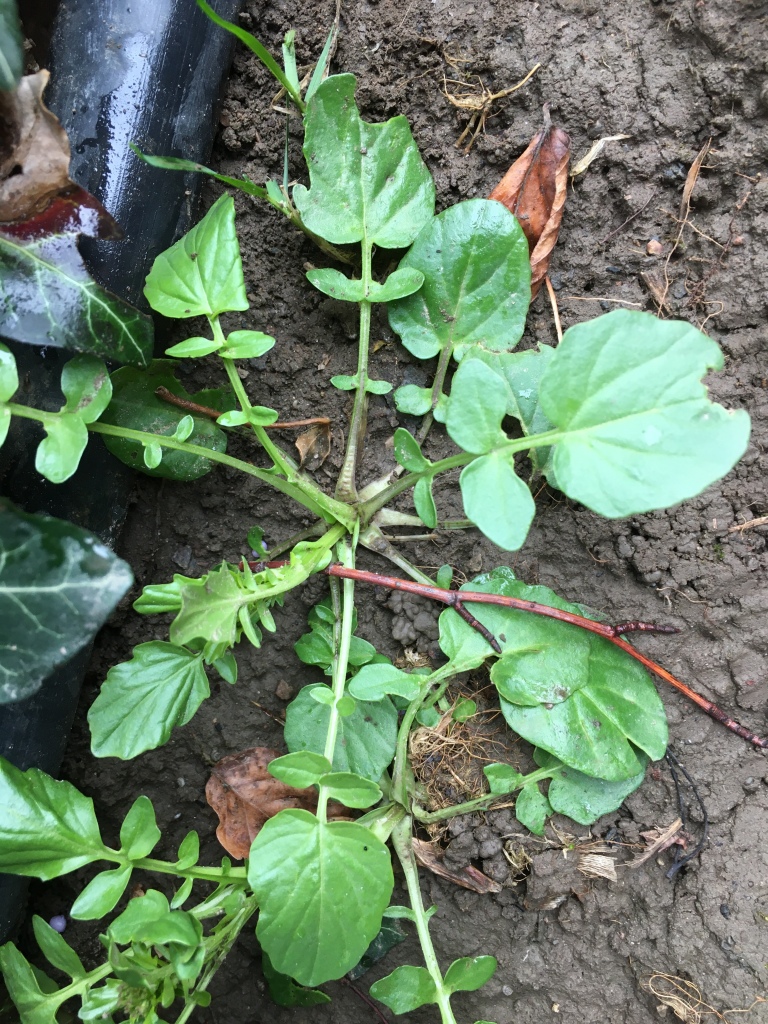
Yellow rocket aka wintercress (Barbarée vulgaire) is a biennial or perennial weed from the Cruciferae (mustard family). It forms a rosette of leaves that are shinny and deeply divided with rounded leaflets that have smooth margins. The terminal leaflet is much larger than the others with the remaining leaflets appearing opposite each other down the leaf stem and become successively smaller. Stem(s) are erect, 20 – 80 cm high with flower stalks branching off of it and terminating in a raceme of golden yellow, 4 petaled flowers. They bloom from mid-May to early July and sometimes again briefly in late autumn. Note: yellow rocket bloom much earlier than wild mustard (which they are often mistaken for) and have smaller more golden flowers.
Yellow rocket control: These plants put on a tap root but they are easy to pull up when they are young. Hand pull, especially in the fall after germination. They can become problematic in the lawn. To combat this keep your turf healthy and vigorous to prevent seeds from getting in, hand pull young plants. There is no pre-emergent herbicide to use against yellow rocket. For regions permitted there are post-emergent herbicides for use in the control of yellow rocket (2,4-D + MCPP + dicamba, diquat, flumioxazin (SureGuard), glyphosate). These are best applied in the fall after germination.
8. Hairy Bittercress (Cardamine hirsuta)


Hairy Bittercress (Cardamine hirsuta) is an annual or biennial in the Brassicaceae, family. This is an edible plant used in salads with a spicy-hot flavour. The plant forms a rosette of pinnately, compound leaves that are slightly scalloped and covered in short, fine hairs. A single leaflet that is slightly larger than the others caps the end of the leaf. Basal leaves measure about 15 cm (6″) in length. From this rosette erect and branching stems arise that may be green or red. These stems are usually 10-25cm (3-10″) tall and are terminated by a cluster of small, white, 4 petaled flowers that are in the shape of a cross. Once the seed pods are ripe they explode ejecting their seed several feet away. The plants particularly flourish in cool, wet, disturbed soil.
Hairy Bittercress control: In the garden hand weeding before the plants set seed in the best option. In the lawn frequent mowing, especially in the spring to prevent them from setting seed is helpful. Hand pulling while plants are young also useful. For regions allowed to spray there are preemergence herbicides available to control hairy bittercress. These herbicides are best applied in early fall, once the heat of summer has past.
9. Chickweed (Stellaria media)



Chickweed (Stellaria media) is an annual or winter annual weed in the Caryophyllaceae (Pink family). This is an edible, highly nutritious plant used raw in salads or cooked. It typically grows horizontally along the ground rooting at the nodes. The leaves are oval shaped with pointed tips, mostly hairless (except the stalks, which have long hairs on them) and have entire margins. The leaves appear opposite down the stems and are spaced fairly far apart. The stems are round, well branched, green to reddish-brown, 5-50cm long, and have a row of short hairs that runs down the length of the stem. The flowers are small and white with 5 deeply notched petals that makes them look like they have 10 petals. Common chickweed is a prolific seeder and capable of producing 10,000 to 20,000 seeds per plant.
Common chickweed control: This weed is mostly a problem during the cooler months of spring and fall. In the garden your vigilance in weeding these plants out the spring will be well rewarded with less weeding later on. In the lawn they are problematic due to their ability to root down at the nodes. Hand pull and remove from the site. Keep your turf healthy and thick to choke out weeds. Mow regularly, especially in the spring to prevent them from flowering. Use a bagger on your lawn mower to prevent spreading the weed fragments that are capable of re-sprouting. Repeated applications of an iron based herbicide like fiesta may provide some control. For regions without a herbicide ban there are several herbicides available both pre and post emergent for use against common chickweed.
10. Mouse-eared Chickweed (Cerastium)

Mouse-eared chickweed (Ceraiste vulgaire) is an annual, winter annual, or short lived perennial in the Caryophyllaceae (Pink family). The plant typically forms low growing matts. The leaves are small, oval and stalkless with entire margins (smooth) that appear opposite down the stems. The upper leaf surfaces and along the veins on the lower surfaces are covered soft hairs 2 mm (1/12″) in length. Stems are also hairy, reddish-brown in colour and grow mostly prostrate with nodes able to root themselves. The interior of these stems are elastic like when pulled apart. The flowers are small and white with 5 deeply notched petals that makes them look like they have 10 petals. These flowers appear at the ends of of long stalks beginning in late spring till late autumn. They are distinguished from their look-a-likes, chickweeds and grass-leaved stitchwort by their hairy leaves and stems and their stalkless leaves.
Mouse-eared chickweed control: Like any of the spring weeds that have the ability to root at the nodes it is more challenging to remove especially when it gets into lawns. In the gardens pull or dig them out before flowering, making sure to completely remove all plant parts to prevent re-sprouting from fragments. In the turf they are are shallow rooters and can be easily pulled up when the plants are young, before their nodes begin rooting down. Once mature they are more difficult to eradicate by hand pulling alone. Keep them from flowering with regular mowing, keep the lawn healthy and thick to help choke them out and bag lawn clipping to prevent spreading it. In regions like Ontario that are not permitted chemical herbicides iron based herbicides may be used. These require multiple treatments every year as it only top kills the weed. For regions allowed to spray repeat applications of a post emergent like 2,4-D, dicamba, MCPP, MCPA, tribenuron will control mouse-eared chickweed. Spot applications of glyphosate when small will also help to control this weed.
11. Wild Violet (Viola sororia )

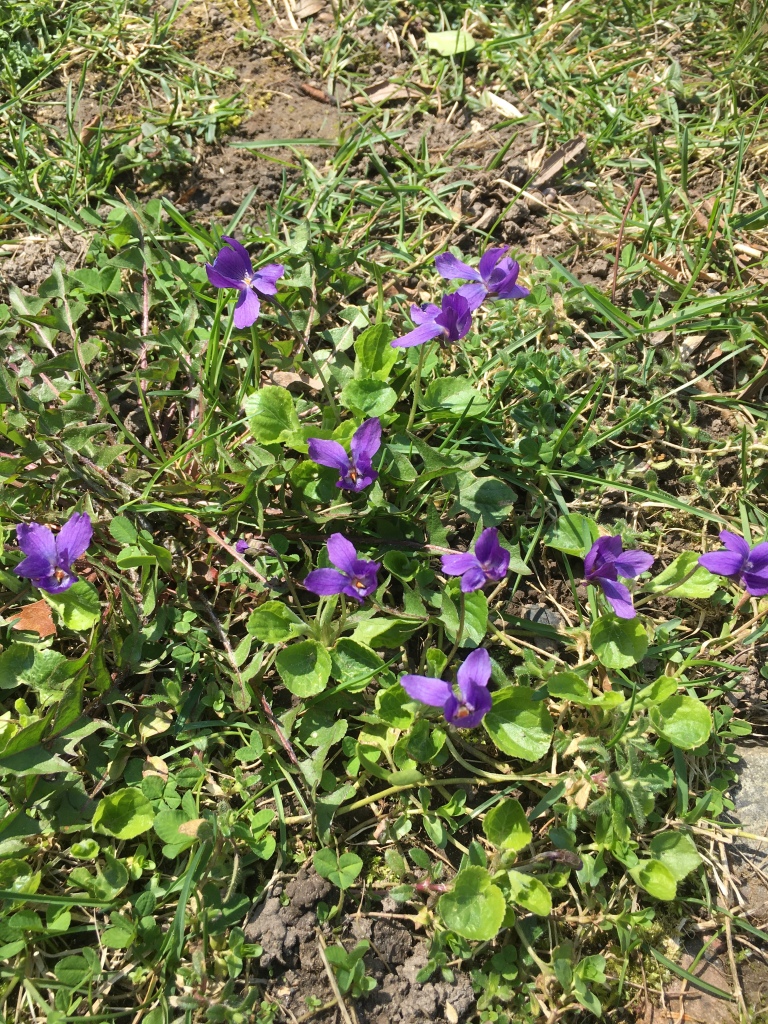

Wild Violet (Viola sororia) is a perennial in the Violaceae (Violet) family. This clump forming weed has a very dense and fibrous root system that make them difficult to weed out. The leaves are heart shaped with scalloped margins and leaf surfaces are glossy and may be smooth or slightly hairy. Leaves form a basal rosette that arise directly from the rhizomes. The edible flowers are typically violet to blue-violet in colour, about 20 mm (¾”) in size and consist of 5 rounded petals that are unequal in size. They begin blooming mid-May here in Ontario. Violets spread by seed and by short, above ground rhizomes that can produce roots and vertical stems at the nodes.
Wild Violet control: violets can be difficult to control due to their aggressive growth habit, particularly in moist, shady, fertile soils. Their waxy leaves make them resistant to many common herbicides. In the garden digging them out and removing them from the site is the best option. In the lawn dig out the patch and reseed. Don’t plant these violets in your gardens near turf. In regions, like Ontario with pesticide bans, sprays containing iron may help to reduce violet populations; but they only top kill and require several applications a year. For regions permitted chemical herbicides 2,4-D or Dicamba are said to control violets.
12. Rough cinquefoil (Potentilla norvegica)

Rough cinquefoil (Potentilla norvegica) is an annual, biennial, or short lived perennial weed from the Rosaceae (Rose) family. This edible plant produces a 15cm (6”) rosette of alternate, compound leaves each leaf consisting of 3 leaflets that are elongated with teeth along the entire margin (some of them double toothed) and hairy. Individual leaves measure about 5cm (2”) long and 1/2 cm (1”) across. From this rosette the plant sends up 1 or 2 erect, hairy stem(s) about 20-50 cm (8-20”) tall that are usually branched a bit near the top. Small yellow, 5 petaled flowers about 5-8 mm in diameter are borne on short stalks at the tips of these upper branches. Each petal is spaced apart by 5 green, pointy tipped sepals. Flowers begin blooming in June. Rough cinquefoil roots are shallow branching taproots. The plant reproduces by windblown seed. Look-a-like plants, strawberry; but on strawberry the lower ¼ to 1/3 of each leaflet is usually without teeth.
Rough cinquefoil control: rough cinquefoil plants can produce as many as 13,000 seeds per plant so the most effective control consists of preventing the plant from going to seed. In the garden setting, digging out their tap root is the best option. In the lawn digging out the taproot is also likely the best option as they seldom seem to colonize large areas of turf. You can keep them mowed to prevent flowering but that tends to result in shorter plants with more branches and spreading roots. For regions without a pesticide ban chemical control is limited but multiple spot spray applications of glyphosate should help as will 2,4-D or dicamba.
13. Canada Thistle (Cirsium arvense)


Canada thistle (Cirsium arvense) is a perennial in the Compositae (Aster) family. It is very aggressive noxious weed that spreads quickly and is difficult to eradicate. It is a rather tall plant capable of reaching heights of up to 150 cm (5’). Leaves range in length from 5-15 cm (2-6”) they alternate up the stems and have spiny, lobed margins that are stalkless. Flowers are typically pinky/purple about 1.5 cm (½ “) in width by 3 cm (1”) in height and appear either singly or in small clusters at the ends of the branched stems. Flowering occurs from late June until August. Plants spread by wind-blown seed and by vigorous underground rhizomes that can spread horizontally by as much as 20’ in one year. From these rhizomes numerous seedlings arise along their length.
Canada thistle control: Canada thistles root system can be quite extensive with rhizomes spreading as much as 20’ wide in one season and roots going as deep as 20’. In the gardens prevent plants from going to seed by cutting them off at ground level or torching them. Pulling or digging them up is not recommended as a new plant will come up at the end of each rhizome that was broken. In the lawn mow them or cut them off at ground level; this will have to be done repeatedly to deplete the root reserves. Chemical control is difficult because of their extensive root system, glyphosate is typically not very effective against it. For a list of chemicals and other control tips for Canada thistle check out this Penn state fact sheet.
14. Canada fleabane (Conyza canadensis)
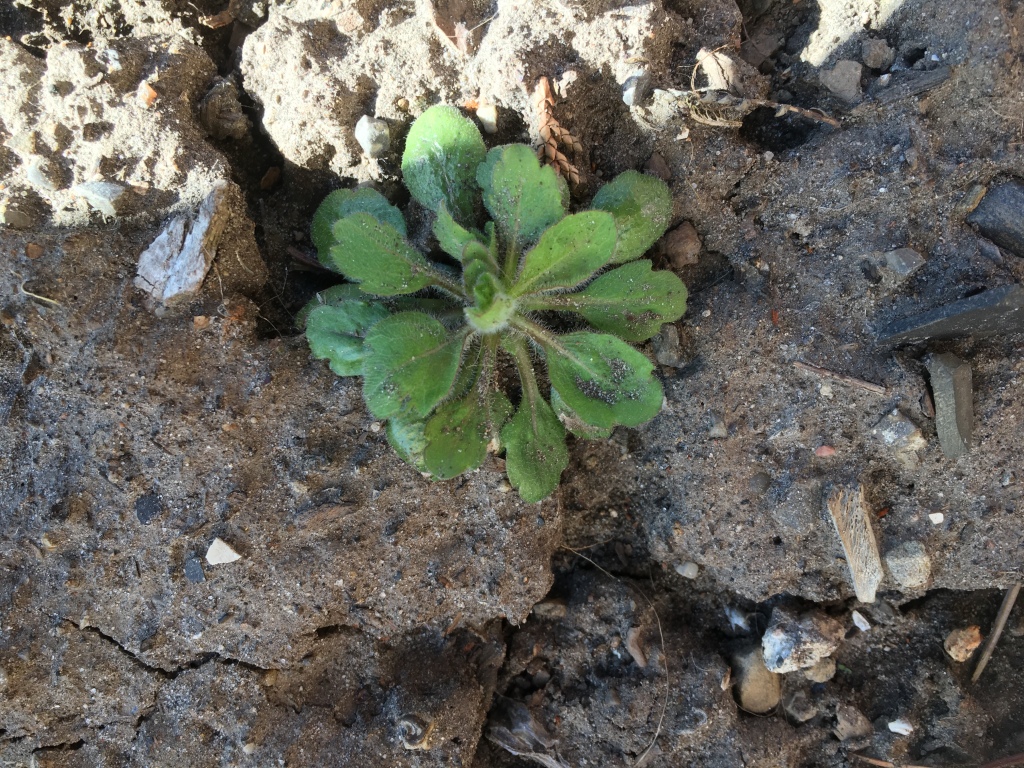
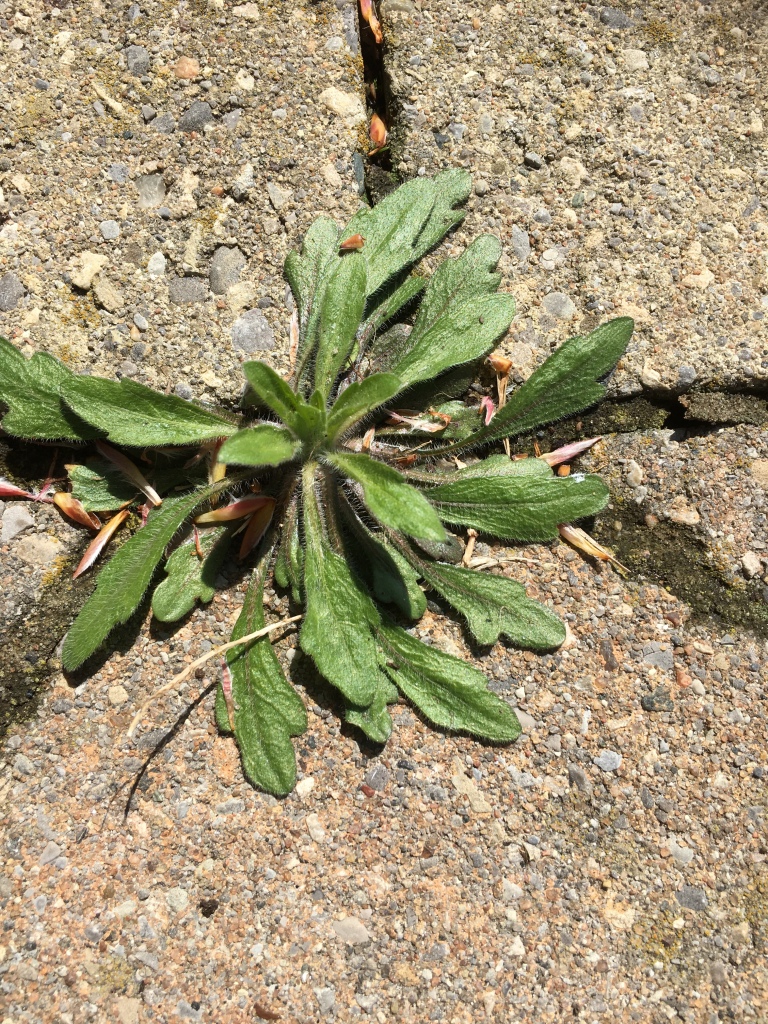
Canada fleabane (Conyza canadensis) aka. horseweed, is an annual or winter annual in the Compositae (Aster) family. It is a native weed that prefers low tillage sights but is also commonly found in Urban areas and along woodland edges and in crops. It can grow quite tall reaching heights of up to 1.5 m (5’) or more with adequate water. It serves as a host plant for the tarnished plant bug and of aster yellows both of which can do substantial damage to ornamentals and vegetables alike. In Ontario most seedlings germinate in late August-October. The plants form a basal rosette of deep green leaves that have some large teeth and are quite hairy especially along the margins and veins. In May the plant sends up one hairy stem that has little to no branching with alternating leaves that are spaced close together. These leaves are a brighter green, narrow, have no teeth and are pointed on the ends. They are less hairy but still have long hairs along their margins. Numerous short branches develop near the top of the stem. These terminate in numerous flowers that are 3-5 mm across consisting of a bell-shaped green base with tiny white inconspicuous rays with yellow centers. They bloom from July to late autumn. The plants reproduce by windblown seed only.
Fleabane Control: These plants are prolific seeders and can produce as many as 200,000 seeds per plant so the key to controlling this weed is to keep it from going to seed in late summer. Their short, branched taproots are fairly easy to pull up in the gardens and even the lawns. Tillage works for larger gardens as will torching. For chemical control in areas with no pesticide ban glyphosate may or may not work as some fleabane populations are resistant to it. Dicamba and 2,4-D/atrazine are also options.
15. Prickly Lettuce (Lactuca serriola)

Prickly Lettuce (Lactuca serriola) is an annual, winter annual or biennial weed in the Compositae (Aster) family. Prickly lettuce is an upright weed reaching a height of 30cm-150cm (1-5ft.). When the stem, leaves or roots are cut or damaged they bleed a milky fluid that coagulates when exposed to the air and becomes rubbery. The plant typically germinates and forms a rosette of light green leaves with serrated edges in the autumn. In early summer the plant typically sends up one hollow stem that has a waxy coating, prickles near the bottom and branches out in the upper portion. The leaves that alternate up this stem are long and fairly narrow measuring about 15cm-30cm (6-12”); they are deeply notched and variable and have a row of spines that run down the midrib on the underside of the leaf. At the ends of these flowering stems appear yellow daisy-like flowers that measure about 9cm (1/3”) across in July-August. The root consists of a tap root. Plants reproduce by windblown seed.
Prickly lettuce control: Preventing them from going to seed is the main goal as one plant can produce thousands upon thousands of seeds. In the garden digging out the tap root is usually the best option. In the lawn use a dandelion prong in moist soil to lift the root out. Natural sprays do not seem to be all that effective. For regions with no pesticide ban glyphosate and 2,4-D are effective at controlling this weed.
16. Shepherd’s-purse (Capsella bursa-pastoris)



Shepherd’s-purse (Capsella bursa-pastoris) is an annual or winter annual in the Cruciferae (Mustard) family. It is an edible plant. The young leaves, roots, flowers and seed pods have a mild peppery flavour that can be added to salads and soups and the such as well as used medicinally for their antioxidant and anti-inflammatory properties. The seeds typically germinate in fall (but may geminate in spring) and form a basal rosette of medium green, elongated, typically deeply devided leaves, (although they may also be shallowly divided or even entire). The rosette looks very similar to dandelion. Mature leaves measure about 5-10 cm (2-4”) long by 2cm (3/4”) and are covered in star shaped hairs (that can be seen under magnification). In spring to mid-summer, the plant sends up one or more, sparsely branched, tall flowering stalk(s) about 6cm (2 1/2”) in height that terminates with a raceme (flower cluster) of white, short lived, 4 petaled flowers. Note: spring germinating seeds flower in mid-summer to fall instead. Flowers give way to distinct heart shaped seed pods that are said to resemble the shape of the leather purses shepherd’s use to wear in the middle ages. The plants reproduce by seed alone. Roots form a weak taproot.
Shepherd’s-purse Control: In the garden setting hand dig the weak tap roots out. While tillage will kill the weed it can resprout from root fragments left in the soil. The plants require light to germinate so increasing the density of desirable plants will help to shade the seeds and reduce gemination; but know that the seeds can remain viable in the soil for many years. For large gardens or turf, 2,4-D or MCPA can be used in late fall to control new seedlings (it is not effective in spring). In the lawn shepherd’s purse may be sprayed with Weed B Gon in spring or other burn down herbicides.
17. Common burdock (Arctium minus)
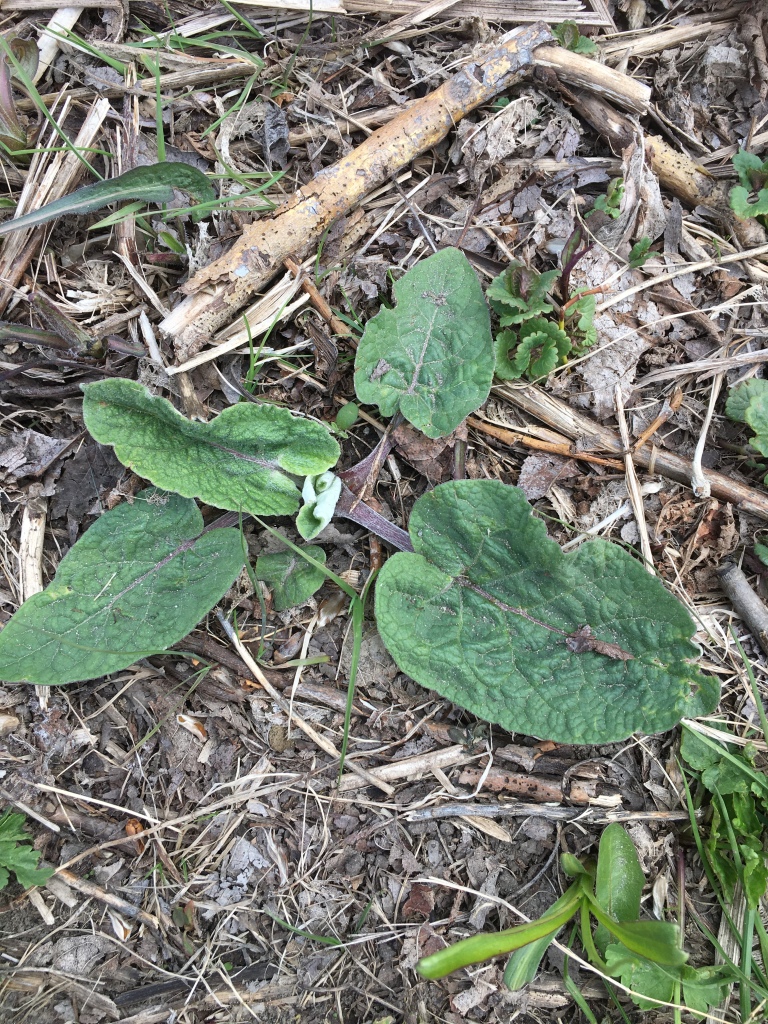


Common burdock (Arctium minus) is a biennial in the Compositae (Aster) family. Also known as lesser burdock. This is an rather large and invasive weed being able to reach heights of up to 6′ tall or just under 2m. In the first year the plant forms a rosette of large heart shaped leaves that look much like a rhubarb plant. These basal leaves measure up to 50cm (20″) long by 30cm (12″) wide and have wooly like hairs on the underside giving it a whitish appearance. Leaf stalks are thick, hollow, reddish/purple towards their base and edible. In the second year the plant sends up a sturdy, tall, thick and hollow stem that has lengthwise grooves and is is often widely branched. This stem is also edible. Purplish flowers are borne at the tips of the stem, branches and from axils of leaves; they are globular in shape and measure about 12-25 mm (1/2″ to 1″). The flowers are surrounded by bracts that are hooked at the ends forming a bur that easily breaks off the stem and clings to animals and clothing , thus dispersing it’s seed. It flowers from July to September. Roots consist of a thick tap root.
Common Burdock Control: These plants reproduce by seed only but they are prolific seeders producing on average 15,000 seeds. Therefore removing the flower stem before seed set is crucial. Due to the large tap root it forms it is best to scout out the young rosettes in spring and hand pull or dig them out. Tilling and mowing are also effective at controlling burdock. For regions permitted the use of chemicals 2,4-D, dicamba, and glyphosate are all effective; these are usually applied to the rosette in the fall.
18. Broad-leaved plantain (Plantago major L.)


Broad-leaved plantain (Plantago major L.) is a perennial weed from the Plantaginaceae (Plantain) family. This edible weed forms a low growing rosette of oval leaves measuring about 5-30cm (2-12″). Each leaf has 3-5 prominent and protruding veins that radiate from the leafstalk towards the tip; leaf margins are wavy toothed or entire (smooth) with a V-shaped leaf stalk. Leafless green floral scapes, that can reach up to 50cm in height, are sent up from the center of the rosette from spring till autumn. The roots are thick and fibrous. Plantain reproduces by seed only.
Broad-leaved plantain control: In the garden dig or pull them out before they set seed. Their presence is usually an indication of compacted soil so loosen garden soil and add a heavy layer of compost. Do this yearly to improve the soils texture and drainage. In the lawn broad-leaved plantain is a common weed that can withstand low mowing. Dig them out by hand or use a dandelion prong. In regions permitted the use of chemicals they can be spot sprayed with glyphosate or in larger areas with a significant population 2,4-D sprayed in the fall or Preen Weed Control applied as directed. Correct the compacted soil with yearly core aerating and compost top dressing and/or liquid aeration.
19. Galium spp.

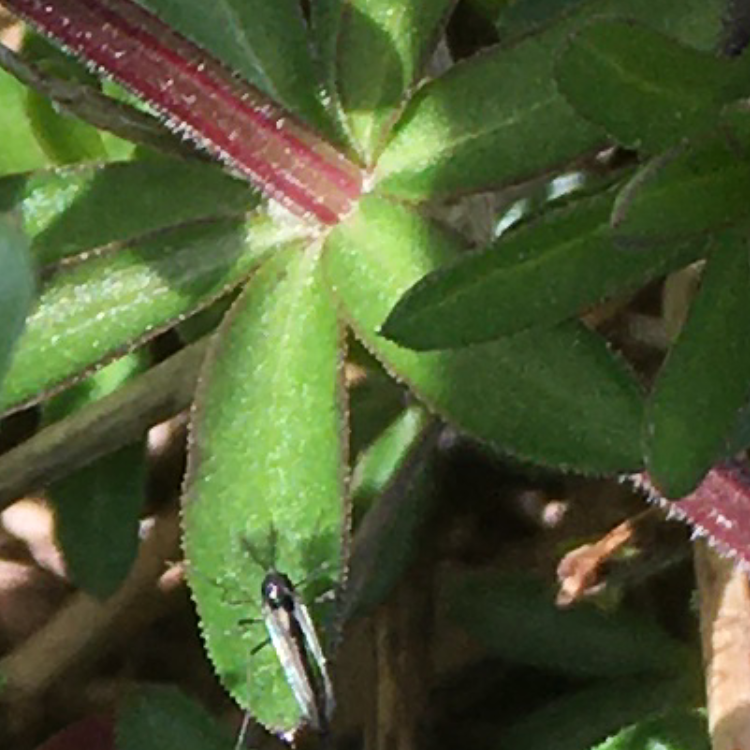

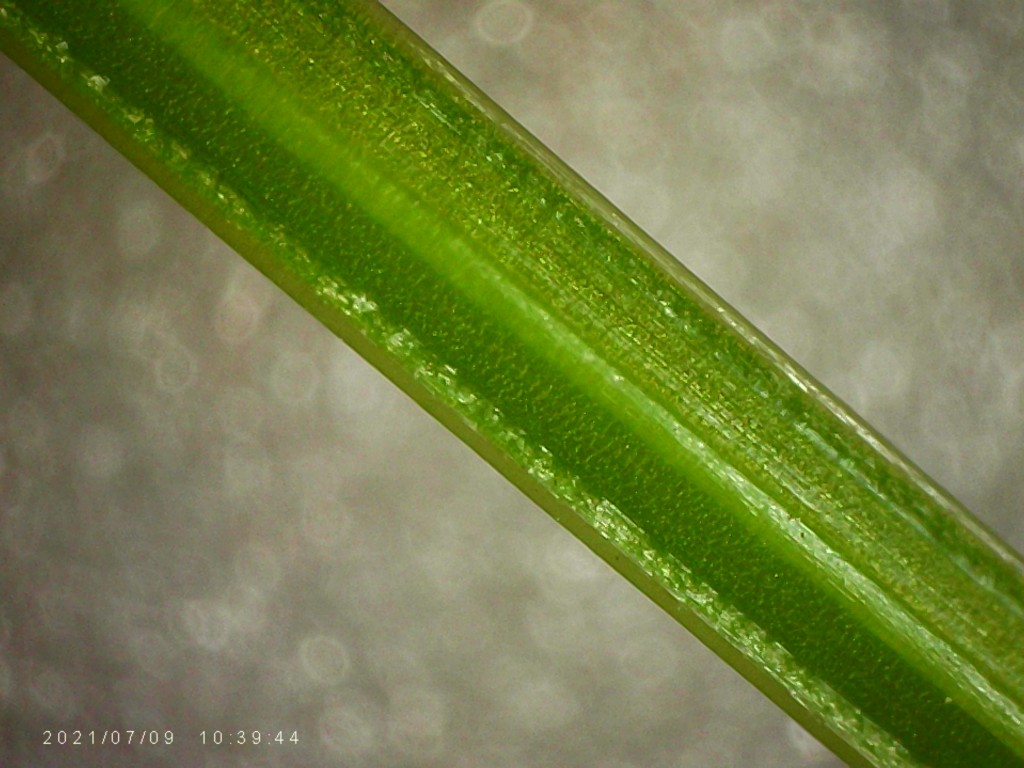

There are several species of Galium. Two of the more common ones are Clevers (Galium aparine), other wise known as goosegrass and the second one is smooth bedstraw (Galium mollugo L.) also known as Hedge Bedstraw. Both are edible weeds from the Madder Family (Rubiaceae).
Clevers: is an annual weed that spreads by seed alone. The leaves are arranged in a whirl around the stem in sets of 6-8 leaves each measuring about (10-80 mm long and 2-10 mm wide). The upper and lower leaf surfaces are some what hairy with leaf margins that are covered in downward pointing prickles. The 60-120cm (2-4′) stems are unbranched and rather weak causing the plant to sprawl along the ground, unless it it has a near by plant to climb and use for support. It’s stems are square and also covered in backward-pointing prickles; they are green in colour but may have a reddish tinge when young. The white 4 petaled flowers are quite inconspicuous measuring about 1-2mm in width by 1mm in height. The seeds that also bears hooked bristles (burrs). The root system is branching, fibrous, and shallow.
Clevers control: In the garden weed them out while they are small. You will have to dig them out rather than pull when they get bigger as the shallow root is weakly attached to the stem and often breaks off. The stems also break easily. Wear a glove that the hooked hairs cannot easily cling to. In the lawn mowing it will keep it from going to seed. For regions permitted chemicals the weeds can be spot sprayed with a post emergent when young. Hand pull bigger plants and spot spray any young regrowth. A pre-emergent like 2-4 D can be helpful if the numbers warrant it.
Smooth bedstraw: is a perennial rather than an annual. It spreads both by seed and underground rhizomes. This plant does not have the prickles on it’s stem or leaves. The leaves are also arranged in a whirl around a square stem in sets of 6-8 leaves but they tend to be smaller than clevers, measuring about 10-30cm (2/5-1¼in.) in length. It similarly has a sprawling growth habit reaching about 1m in height. Stems are branched.
Smooth bedstraw control: In the garden cut of the plant off at the soil line repeatedly until it’s root reserves are used up. For regions permitted the use of chemicals spot spray young plants with a post emergent like glyphosate. In the lawn cut the weed off at the soil line and remove or spot spray young plants with a post emergent like glyphosate. Repeat mowing will weaken the plant and prevent new seed from forming but the plant roots at nodes on the lower stem so clippings will have to be removed to reduce spreading. Post emergents like 2,4-D and dicamba are only moderately helpful requiring high rates for control.
20. Garlic Mustard (Alliaria petiolata)

Garlic mustard (Alliaria petiolata), is a winter annual or biennial in the mustard (Brassicaceae) family. It is an edible plant high in vitamins A and C with a distinct garlic odour when crushed. Garlic mustard is a highly invasive weed that is capable of invading both disturbed and undisturbed forested areas, wetlands and roadside ditches. It can also be a problem for the home gardener in regions where the plant grows abundantly. It is native to Europe and has spread to many areas in Southern Canada (particularly the south-east) and the United States. The plant typically forms a rosette of 1-7 cm, kidney shaped leaves with scalloped edges in it’s first year. In the spring they send up a 60-90cm (2′-3′) flowering stem, occasionally more than one, especially if the first one has been damaged in any way. The leaves on this stem are approximately 5-10 cm (2″-4″) across and more triangular in shape, with sharply toothed edges, that alternate up the stem. In May small white, 4 pedaled flower clusters appear at the tips of the stems, followed by the formation of long narrow seed pods containing little black seeds. Garlic mustard plants reproduce only by seed, but they are prolific seeders and can quickly colonize and area. Seeds germinate in fall or early spring.
Garlic mustard control: for the home gardener hand pulling is usually the best option. The roots are shallow and easily pulled. Begin scouting for them in the fall weeding out any found. In the spring begin scouting and removing seedlings again. In May-June they will flower, it is imperative that these flowers be removed and not allowed to go to seed. Dispose of flowering stems and seed pods in black bags, do not compost. When you are finished working in an area with garlic mustard clean your shoes, gloves and tools to avoid spreading the seed to other areas.
Photo Credits: all photos taken by the author.
Last updated on Oct.25, 2021
Reading resources links:
Ground Ivy Control for Home Lawns (E0006TURF) – MSU Extension
Benefits of white clover as a cover crop – MSU Extension
White Clover – Field Guide of Invasive Plants and Weeds in the Southwestern Region (fs.fed.us)
Common Purslane, Portulaca oleracea – Wisconsin Horticulture
Ontario Weeds: Stinkweed (gov.on.ca)
Ontario Weeds: Yellow rocket (gov.on.ca)
Hairy Bittercress – Edible Weed (wildedible.com)
Mouse-eared Chickweed – Ontario CropIPM (gov.on.ca)
Mouse-ear Chickweed | Purdue University Turfgrass Science at Purdue University
Common Chickweed (Stellaria media) (gov.on.ca)
https://plants.ces.ncsu.edu/plants/viola-sororia/
https://www.friendsofthewildflowergarden.org/pages/plants/blueviolet.html
Rough Cinquefoil (Potentilla norvegica) (illinoiswildflowers.info)
Rough Cinquefoil, Potentilla norvegica L. (friendsofthewildflowergarden.org)
https://www.invasive.org/alien/pubs/midatlantic/ciar.htm
https://piercecd.org/157/Canada-Thistle
Ontario Weeds: Canada thistle (gov.on.ca)
The biology of Canadian weeds. 115. Conyza canadensis (cdnsciencepub.com)
http://www.omafra.gov.on.ca/english/crops/facts/ontweeds/canada_fleabane.htm
https://www.friendsofthewildflowergarden.org/pages/plants/canadianhorseweed.html
Prickly Lettuce (gov.on.ca)Ohio Weedguide (ohio-state.edu)
Ohio Weedguide (ohio-state.edu)
http://www.omafra.gov.on.ca/english/crops/facts/ontweeds/shepherds_purse.htm
https://www.illinoiswildflowers.info/weeds/plants/shepherd_purse.htm
Ontario Weeds: Common burdock (gov.on.ca)
Microsoft Word – Common burdock.doc (invasive.org)
Ontario Weeds: Broad-leaved plantain (gov.on.ca)
Plantain Herb: Foraging and Using Plantago Species (practicalselfreliance.com)
Broadleaf Plantain | Weed Management | Farms.com
OIPC_BMP_GarlicMustard.pdf (ontarioinvasiveplants.ca)
The Foraged Foodie: Foraging: How to Find, Identify, Prepare and Eat Wild Cleavers Weeds
Cleavers (Galium aparine) (illinoiswildflowers.info)
Cleavers: Pictures, Flowers, Leaves & Identification | Galium aparine (ediblewildfood.com)
Galium mollugo CJPl.Sci.pdf (cornell.edu)
Ontario Weeds: Cleavers (gov.on.ca)
Ontario Weeds: Smooth bedstraw (gov.on.ca)
https://www.ontario.ca/page/garlic-mustard
Books
Identification Guide to the Weeds, of Quebec by Claude J. Bouchard and Roman Neron with the collaboration of Louise Guay
All rights reserved

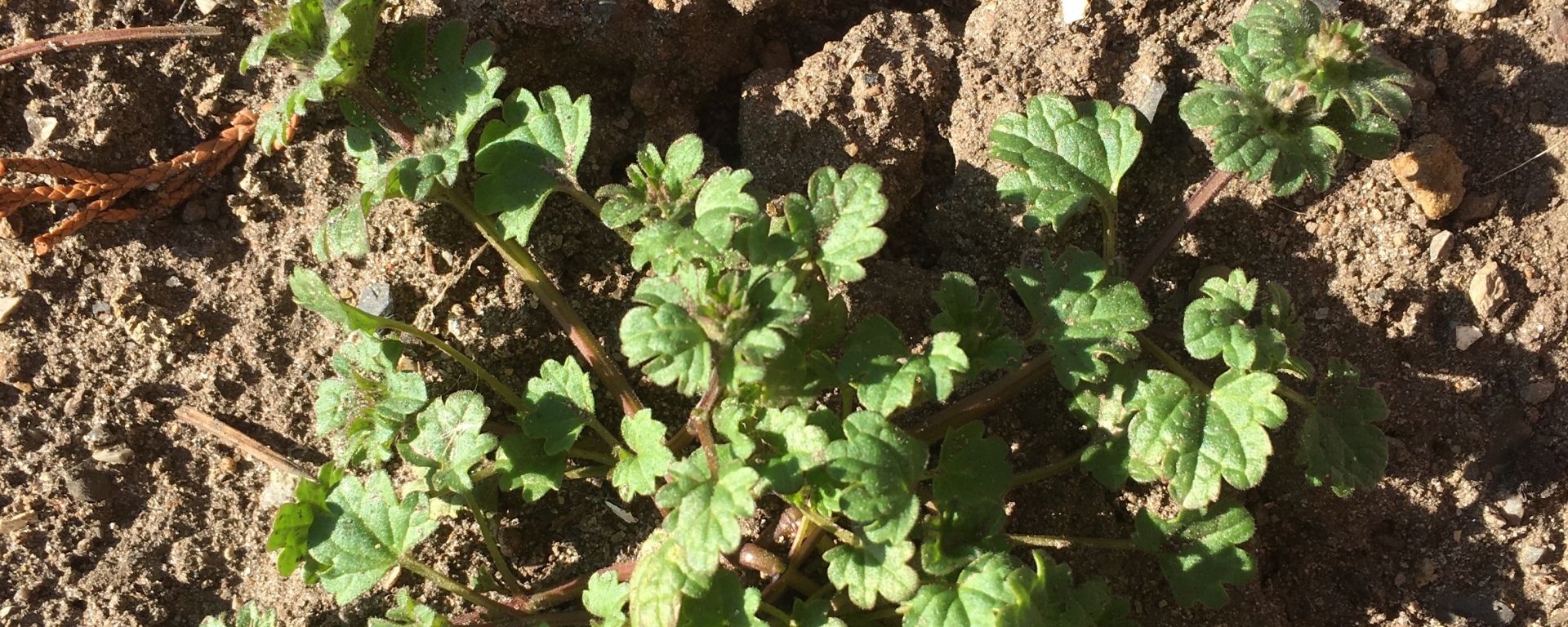
Great list ! But there should be a place where other people could contribute to increase the data base cause there are no shortage of weeds in and around GTA, Ontario.
LikeLiked by 1 person
I agree Kamal there is no shortage of weeds in GTA. I am a planning another article entitled summer weeds. There will be 20 more weeds added to the list. i already have the photos just have to find the time to get it researched and written. Up coming weeds like Black Medick, Spotted spurge, Lambsquarter, Prostrate knotweed, Goldenrod, Bull Thistle and many others, will be addressed.
LikeLike
What a great list !
LikeLiked by 1 person
Excellent article, thank you! I knew a few from my own journey, but you really covered it all perfectly! Photos are great as well!
LikeLiked by 1 person
A very good resource for weeds in Ontario.
LikeLiked by 1 person
Great resource with pics.
LikeLike
Thanks Pam
LikeLike